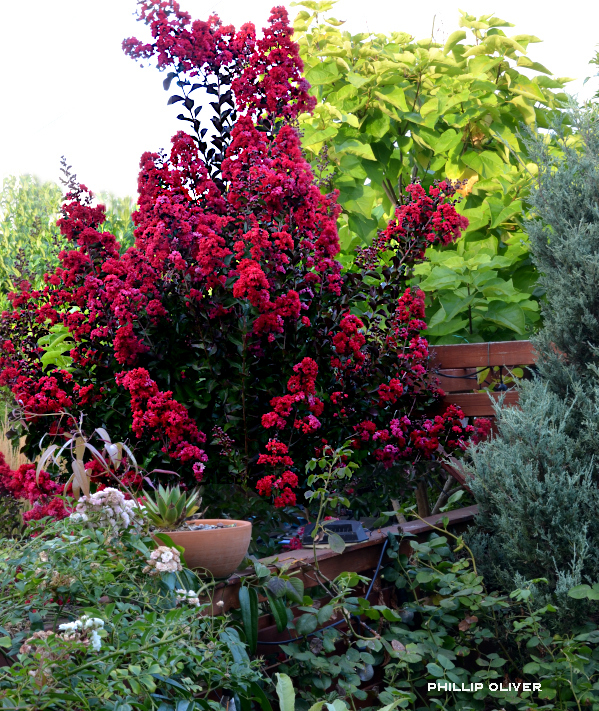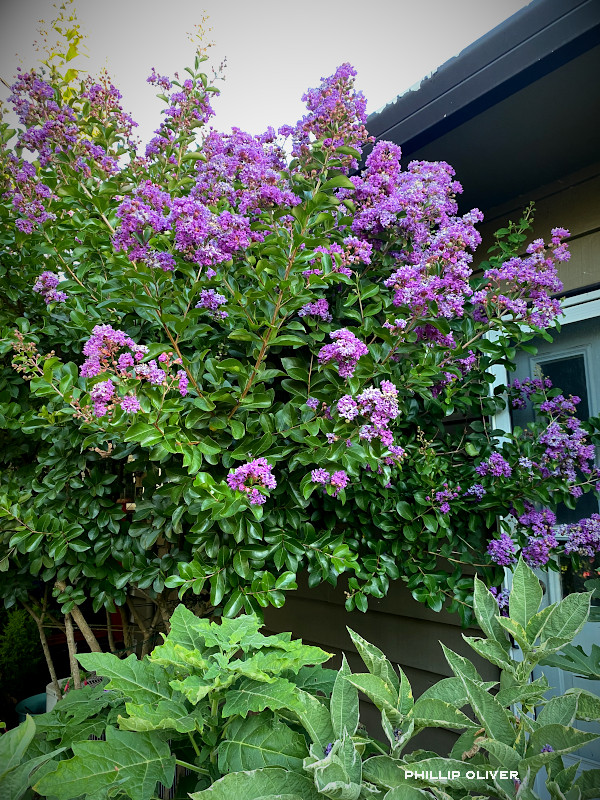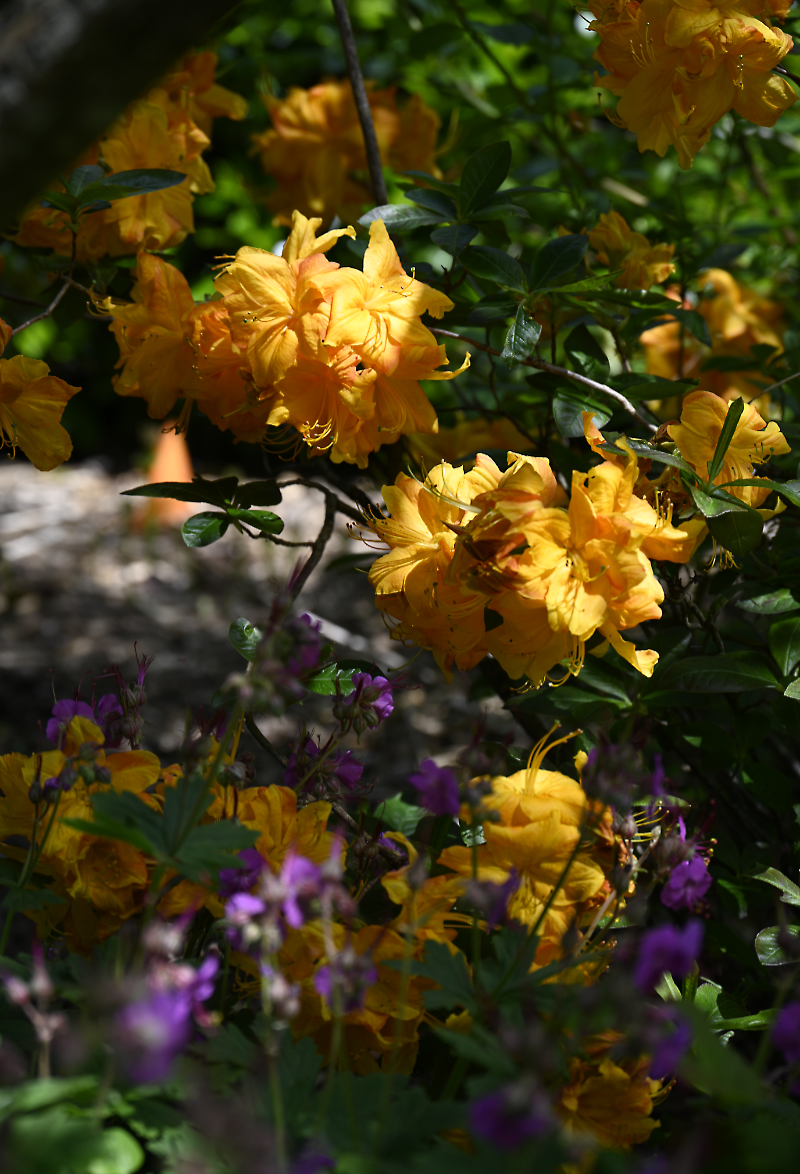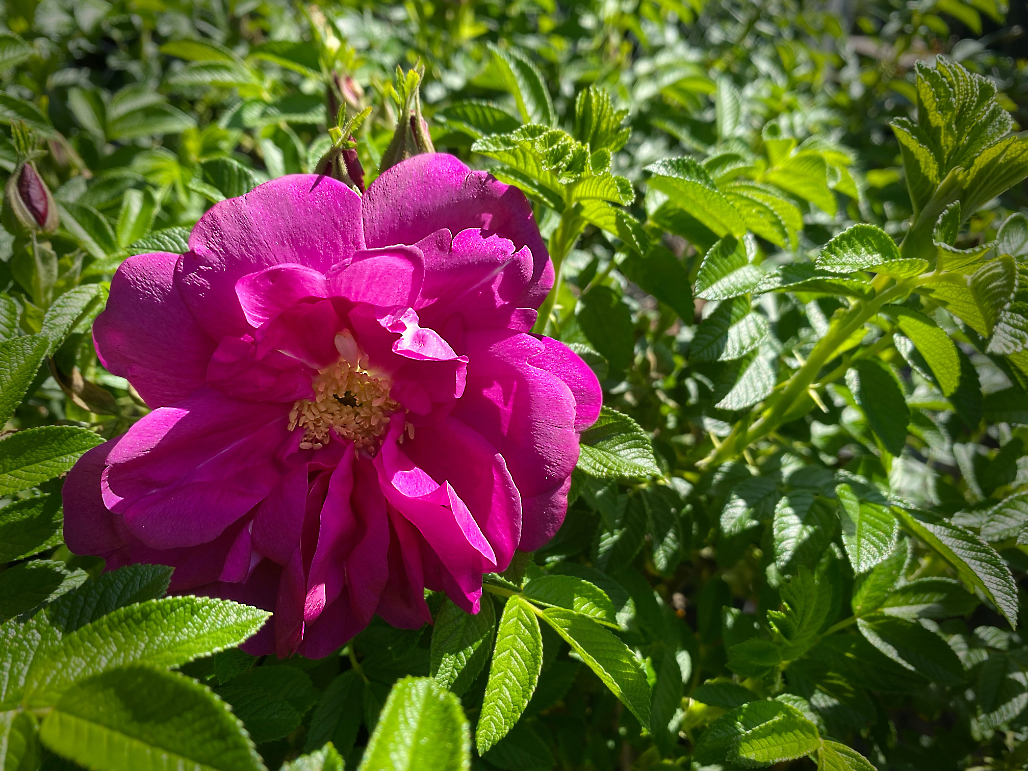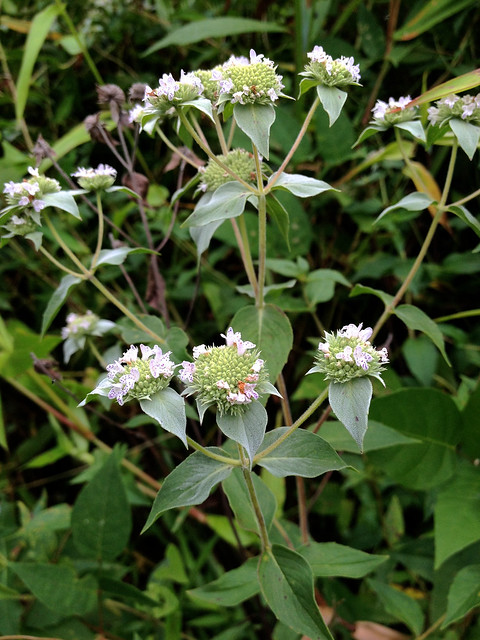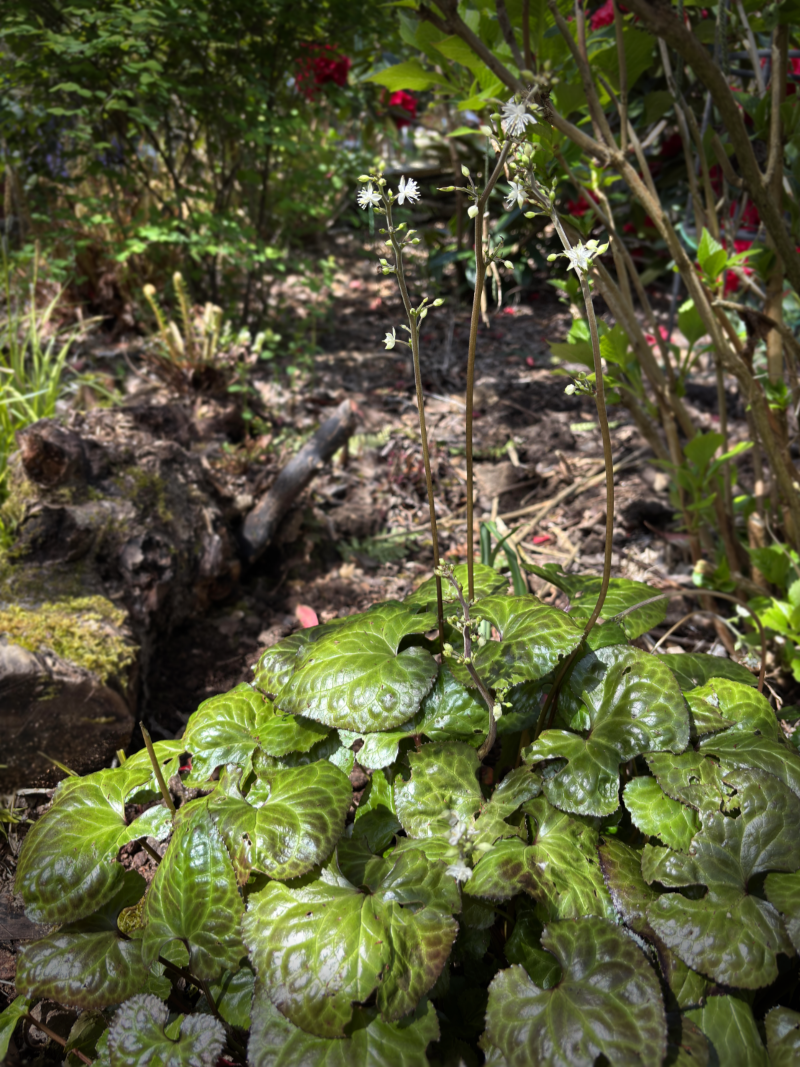Crape Myrtles
The Crape Myrtle (Lagerstroemia) is a stunning large shrub or small tree with many fine characteristics. They can be purchased as either a single trunk standard or shrubs. Shrub forms are very attractive when they are limbed up as they age so that they become multi-trunked trees. Exfoliating bark reveals patches of gray and mahogany as the plants age. The fall color is strong with vibrant oranges and yellows. The major attraction are the showy flowers which appear in large panicles with a crepe-like texture. Flower colors come in a variety of purples, reds, pink and white and they are long-lasting. Flowers generally begin to appear in mid to late summer with some varieties earlier than others.
If you are considering adding crape myrtles to your garden, here are a few pointers that will make them a success –
Location – These plants love heat. Take an assessment of your garden and note where the warmest areas are. A southern exposure, preferably against a wall or the side of your house, is good. Even better is an area that gets reflected heat from concrete. This could be a stone patio area or next to the driveway. While these factors are not absolutely required, they will make your crape myrtle very happy.
A full sun location is also highly desirable for these plants. Plant them in a location where they can receive direct sunlight for the majority of the day.
Watering – The phrase “drought tolerant” always surfaces in conversations about crape myrtles. True, they can handle low water situations. However, in order to look their best and most importantly, give you those beautiful blooms, they need water! Crape myrtles respond well to deep watering – that means not depending on a sprinkler system that probably only gives enough water to barely penetrate the surface but a bucketful or two to make sure the water seeps way down to completely penetrate the root ball. One time per week should be enough.
Soil – Crape Myrtle isn’t too particular about soils and they actually do quite well in clay soil or average loam. Of course, adding some compost to the planting hole will be an added benefit and help the plants grow better and faster.
Pruning – Crape Myrtles bloom on new wood so you want to prune at the beginning of the season. Keep in mind that pruning is not a necessity. Generally, removing any dead, crossing or damaged branches as well as trimming back the branches only a foot or so is all that is needed. “Limbing up” a shrub to achieve a tree-like effect makes a very attractive plant. This should be done a little at a time as the plant puts on growth. After the flowers begin to appear in late summer, deadheading fading blooms will encourage more blooms as well as maintaining a tidy appearance. The flowers also make excellent cut flowers and last for several days in water.
Choose Cultivars Wisely – There is a wide array of sizes, ranging from dwarf varieties that only get 4 -5 feet to varieties like ‘Natchez’ which can reach 25 feet tall and wide. Do some research before you shop and read the labels carefully. Flower color is another option to consider. Generally, colors are in the red, purple, pink and white ranges. Foliage can also be quite different with some varieties having green leaves and others red or burgundy. Newer varieties are being introduced every year.
Be patient in the Spring – Every year, we get phone calls from distressed customers who think their crape myrtle has died over the winter because it hasn’t leafed out. They are VERY slow to leaf out and are one of the last plants to develop leaves in the spring.
Fall color – Crape myrtles leaves turn fiery shades of orange and red in autumn. After the leaves fall, the plants offer beautiful bark during the winter months. As the trees age, the bark begins to exfoliate to reveal shiny, smooth wood in tones of red and mahogany.
We have a variety of sizes at Yard N’ Garden Land, ranging from small shrubs to medium standards and tall (8′) trees on single trunks.
Photos by Phillip Oliver

